14 Most Popular Vintage Dishware Styles and Their Origins
Dishware from past eras holds a charm that modern sets often cannot match. Over the years, these dishes have become more than just functional items; they have become collectibles and symbols of history. Vintage dishware styles often reveal a lot about the time periods in which they were made. From the detailed artistry of the 19th century to the sleek simplicity of mid-century modern, each design reflects a specific era. Whether you are a seasoned collector or someone new to the world of vintage dishware, learning about these styles is always exciting.
This post may contain affiliate links, which helps keep this content free. Please read our disclosure for more info.
Wedgwood Jasperware
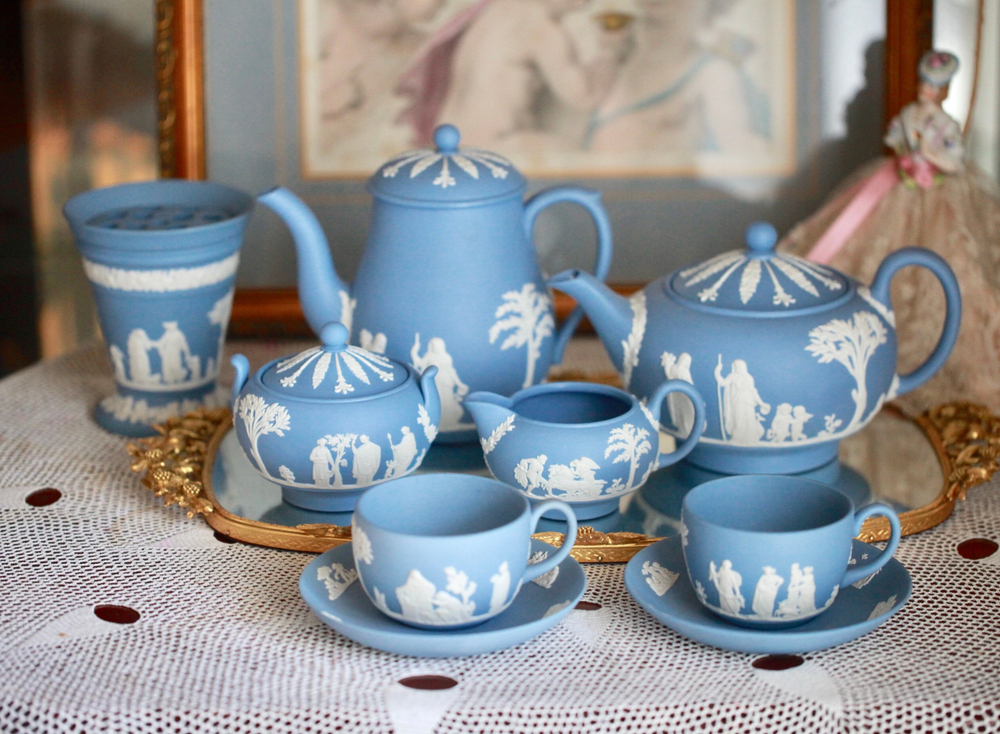
Wedgwood Jasperware, first introduced in 1775, is a signature style from the renowned English pottery brand. It is made from fine stoneware and is often characterized by its matte finish and white relief designs on colored backgrounds, such as blue, green, and lilac. This style was created by Josiah Wedgwood, who aimed to produce a durable yet elegant material. Jasperware can range in price, with some pieces fetching between $500 to $5,000 depending on rarity and condition.
The design of Wedgwood Jasperware was influenced by classical art, with motifs drawn from ancient Greek and Roman imagery. The iconic blue color was inspired by the famous Portland Vase, an ancient Roman artifact. Today, Wedgwood Jasperware is highly sought after by collectors and is often displayed in museums. Its historical significance and craftsmanship contribute to its ongoing popularity in vintage dishware collections.
Royal Worcester

Royal Worcester is one of the oldest porcelain manufacturers in England, founded in 1751. Known for its fine quality, it gained popularity for its detailed hand-painted designs, including floral patterns and gold accents. The company revolutionized the production of porcelain with techniques that made their pieces highly collectible. A piece of Royal Worcester dinnerware can range from $200 to $5,000 or more, depending on the age, pattern, and condition.
Royal Worcester became famous for producing dinnerware for the royal family and aristocracy. Some of the most iconic pieces feature delicate painting and gilding, with designs that celebrate nature, historical events, and family crests. The porcelain used was known for its translucency and smooth finish, making it highly valued in antique markets. Today, it remains a highly respected brand in the world of vintage dishware.
Limoges Porcelain
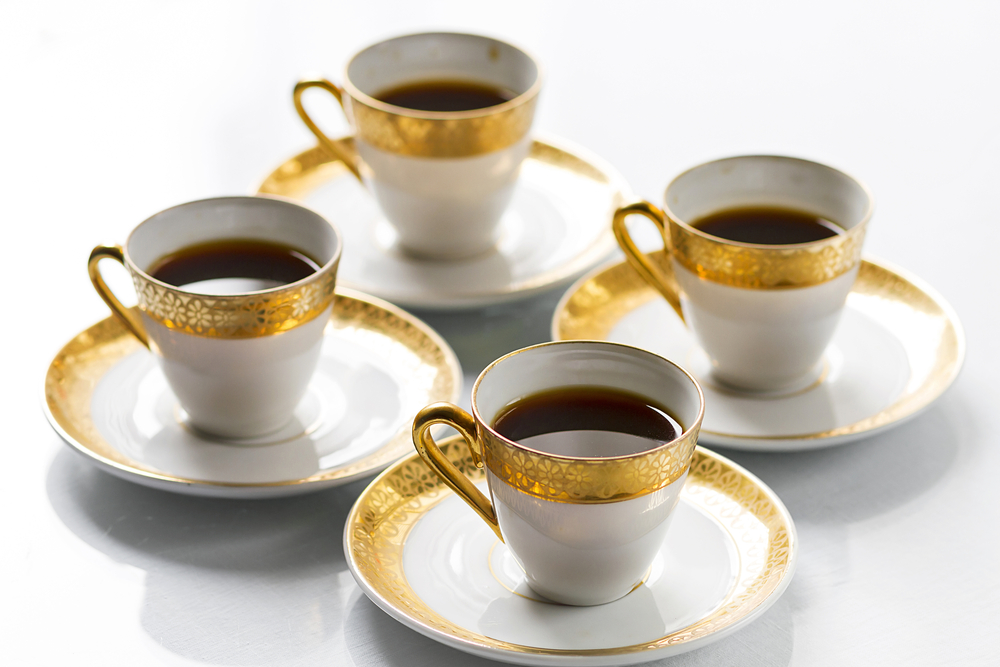
Limoges porcelain, originating from Limoges, France, has been a symbol of fine craftsmanship since the 18th century. The style became prominent after the discovery of kaolin, a key ingredient for making porcelain, in the region. Limoges porcelain is known for its delicate, hand-painted designs, often featuring floral patterns and intricate gold work. Limoges porcelain pieces can range in price from $100 to $5,000 depending on age, design, and manufacturer.
Limoges porcelain became famous in the 1800s, and the name is now synonymous with high-quality porcelain. The pieces were often created for aristocratic clients and were seen as luxury items. Today, Limoges porcelain is still in demand for its exquisite designs and historical value. It continues to be a favorite among collectors of vintage dishware due to its elegance and rich heritage.
Mikasa
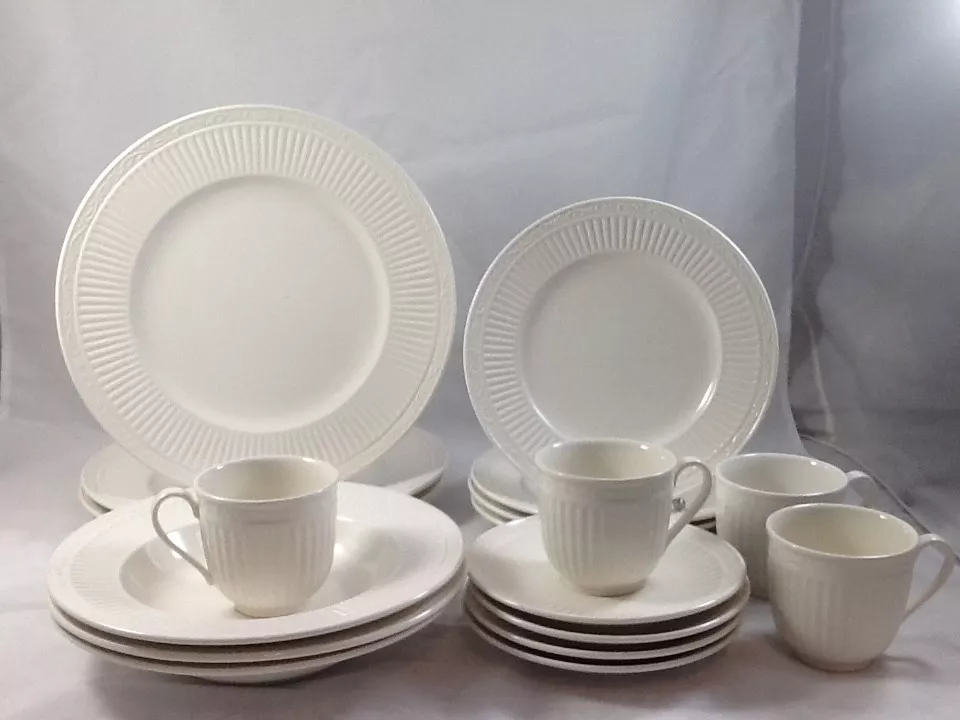
Mikasa, founded in 1948 in Japan, quickly gained recognition for its modern, clean, and sophisticated dinnerware designs. The company became known for its high-quality porcelain, which combined practicality with style. Mikasa was influenced by both European and American design trends and became especially popular in the 1960s. Today, vintage Mikasa dinnerware sets can be found for between $50 and $500, with more rare patterns fetching higher prices.
Mikasa’s designs were initially crafted with the goal of offering elegant tableware at affordable prices. The brand’s innovative patterns, such as Holiday” and English Countryside,” continue to hold value among collectors. Mikasa’s mix of minimalist and elaborate designs allows it to appeal to a wide range of tastes. It remains one of the most recognized names in vintage dishware.
Fiesta Ware
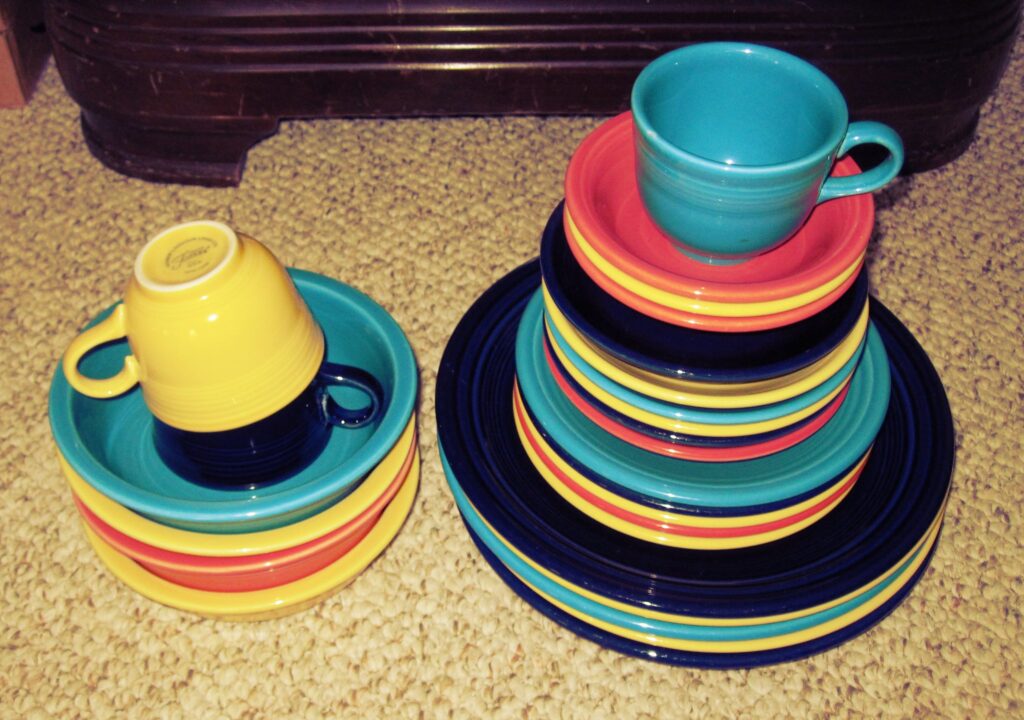
Fiesta Ware, created by Homer Laughlin China Company in 1936, is one of the most iconic examples of American vintage dishware. Known for its bold, vibrant colors and Art Deco-inspired design, Fiesta Ware revolutionized the dinnerware market. The line was created to be affordable and durable, with colors like cobalt blue, scarlet, and sunflower. Vintage Fiesta Ware can range from $30 for basic items to over $1,000 for rare colors and limited-edition pieces.
Fiesta Ware was one of the first mass-produced dinnerware lines to be made in the United States and quickly became a staple in American households. Its colorful design was seen as modern and fun, and it was intended to be both functional and stylish. Today, certain pieces, particularly those in discontinued colors, are highly sought after by collectors. Fiesta Ware’s simple yet bold aesthetic has made it a lasting favorite in vintage dishware collections.
Spode Blue Italian
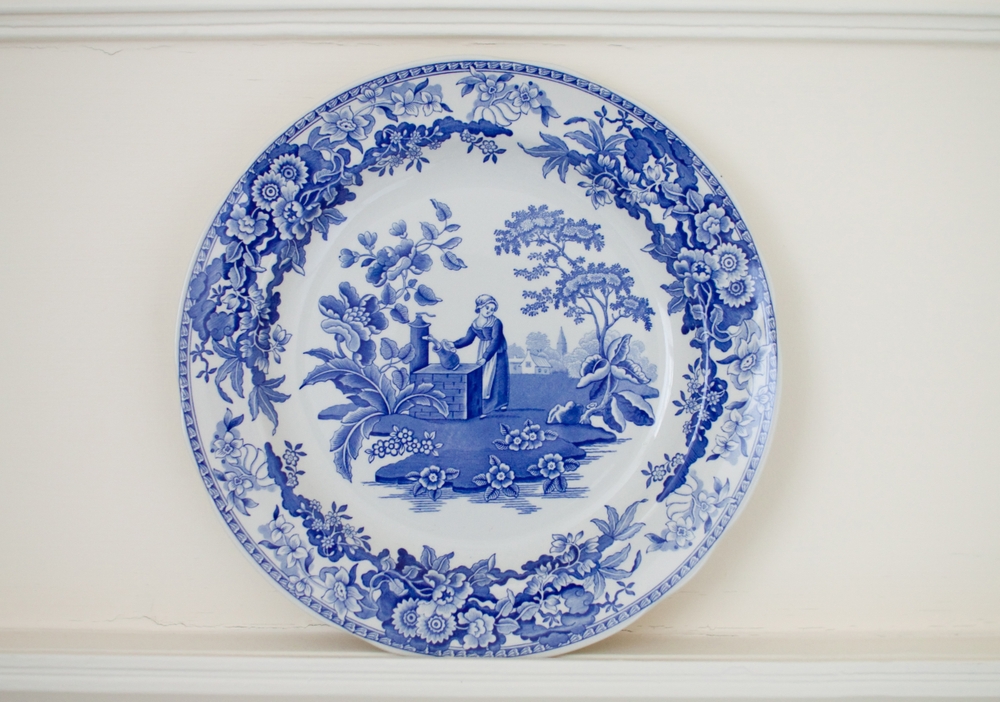
Spode Blue Italian is a renowned pattern of transferware that originated in England in 1816. Known for its rich blue and white design, the pattern features romanticized landscapes, Italian architecture, and intricate floral motifs. The design was created by Spode’s founder, Josiah Spode, who used a unique technique of underglaze printing to produce this durable, fine porcelain. A set of Spode Blue Italian can range from $150 to $2,500 depending on the specific piece and its age.
The design of Spode Blue Italian was inspired by 18th-century engravings and the picturesque landscapes of Italy. It became immensely popular in the early 19th century and was even used to serve royalty. Its iconic blue and white aesthetic continues to be beloved by collectors and is often seen as a symbol of traditional English elegance. The ongoing production of Blue Italian ensures that its legacy endures in the world of vintage dishware.
Noritake
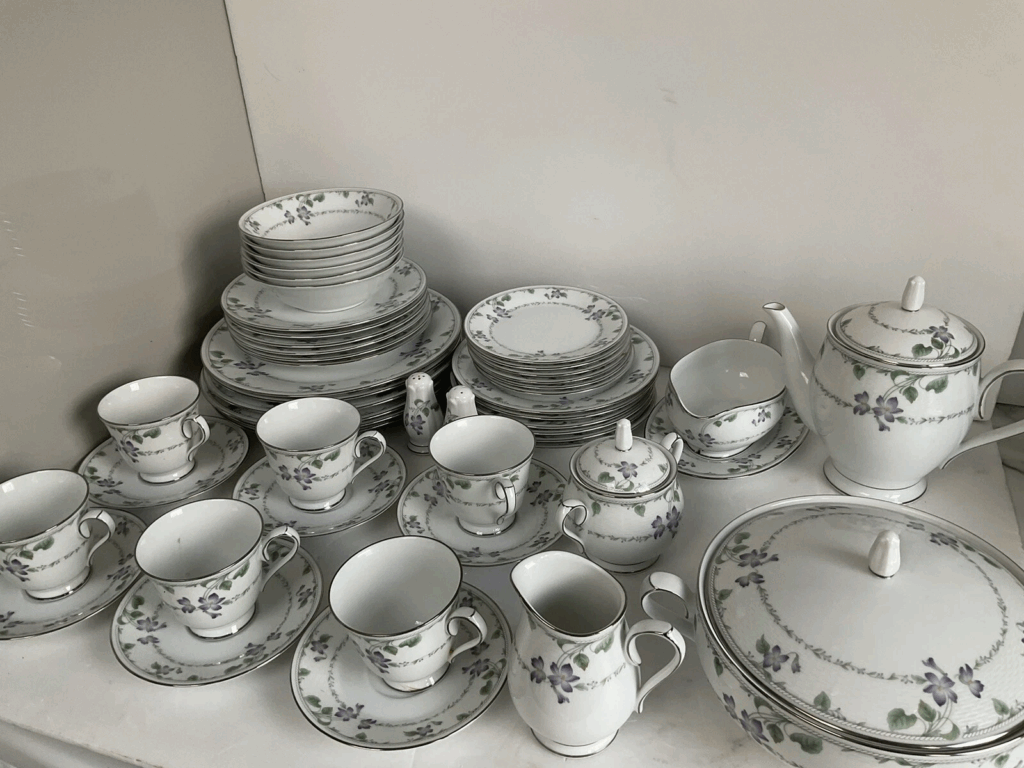
Founded in 1904 in Japan, Noritake became known for its high-quality porcelain and delicate hand-painted designs. It gained international popularity in the 20th century for producing both fine china and everyday dinnerware. Noritake’s early designs were inspired by European motifs, which were adapted to suit American and Japanese tastes. Vintage Noritake pieces can be found for $50 to $1,500, depending on the design and rarity of the pattern.
Noritake dinnerware became especially popular in the 1920s and 1930s and has remained a staple in fine china collections ever since. The company’s intricate floral patterns, gold trims, and elegant finishes made it highly desirable in both formal and casual settings. Today, Noritake is known for both its vintage and contemporary collections, with older, rarer patterns fetching high prices in the collector’s market. The company’s rich history and craftsmanship continue to be appreciated worldwide.
Bavarian China
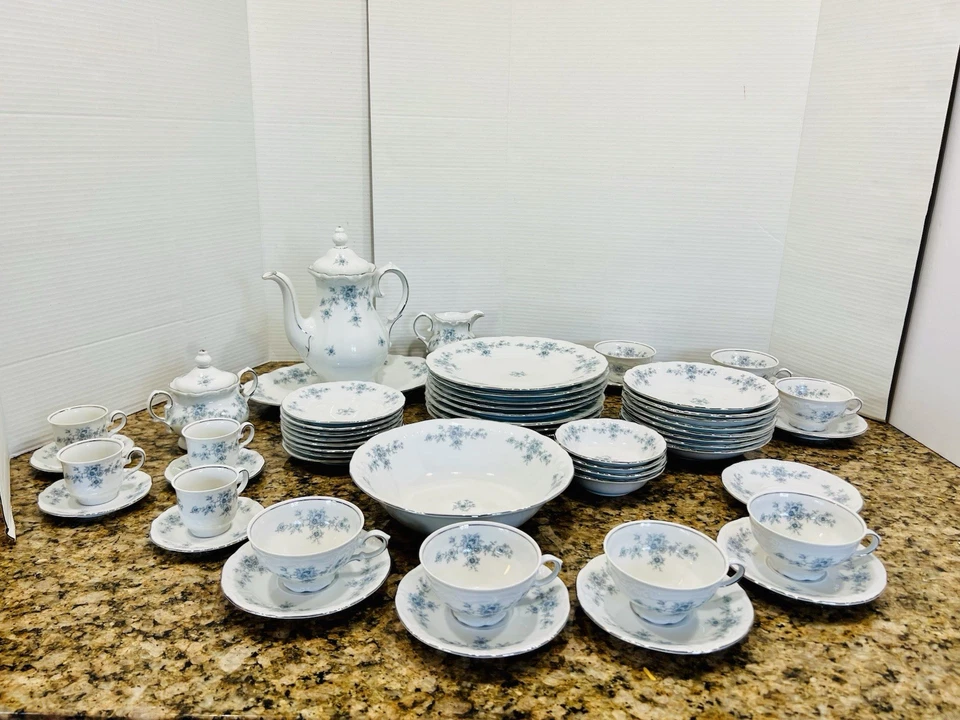
Bavarian China, produced in the region of Bavaria, Germany, dates back to the 19th century and is known for its fine porcelain and hand-painted floral designs. The term Bavarian China typically refers to porcelain produced by several different manufacturers, including companies like Rosenthal and Hutschenreuther. The intricate designs, often featuring flowers and elegant gold accents, became popular in Europe and North America. Depending on the piece, Bavarian China can range from $50 to $1,000 or more.
The origin of Bavarian China traces back to the royal porcelain factories of the 1800s, which were influenced by both the Rococo and Neoclassical movements. These pieces were originally made for the aristocracy, but over time, they became available to a wider audience. Today, vintage Bavarian China is still revered for its craftsmanship and is often considered a symbol of refined European elegance. Collectors are drawn to its delicate artistry and historical significance.
Staffordshire Transferware
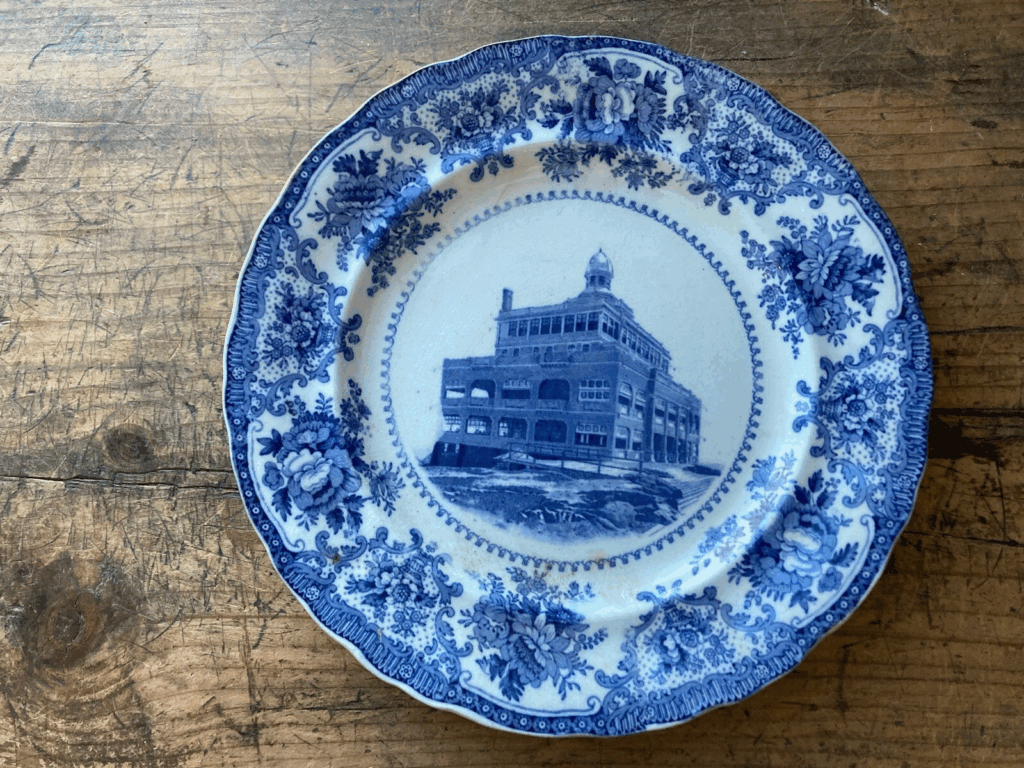
Staffordshire Transferware, produced in the Staffordshire region of England in the 18th and 19th centuries, is known for its blue-and-white designs depicting pastoral scenes, landscapes, and historical events. These designs were created using a technique known as transfer printing, which allowed for mass production of intricate patterns on ceramics. Staffordshire transferware has become highly collectible, with prices ranging from $50 to $2,000 for particularly rare and well-preserved pieces.
The distinctive blue-and-white aesthetic of Staffordshire transferware was influenced by the popularity of Chinese export porcelain, which was imported to England during the 18th century. By the early 19th century, Staffordshire potteries were producing their own versions of this porcelain, using transfer printing to create detailed designs. The affordability and beauty of Staffordshire transferware made it a staple in British homes, and its legacy continues today as a beloved style among collectors of vintage dishware.
Chinoiserie Porcelain
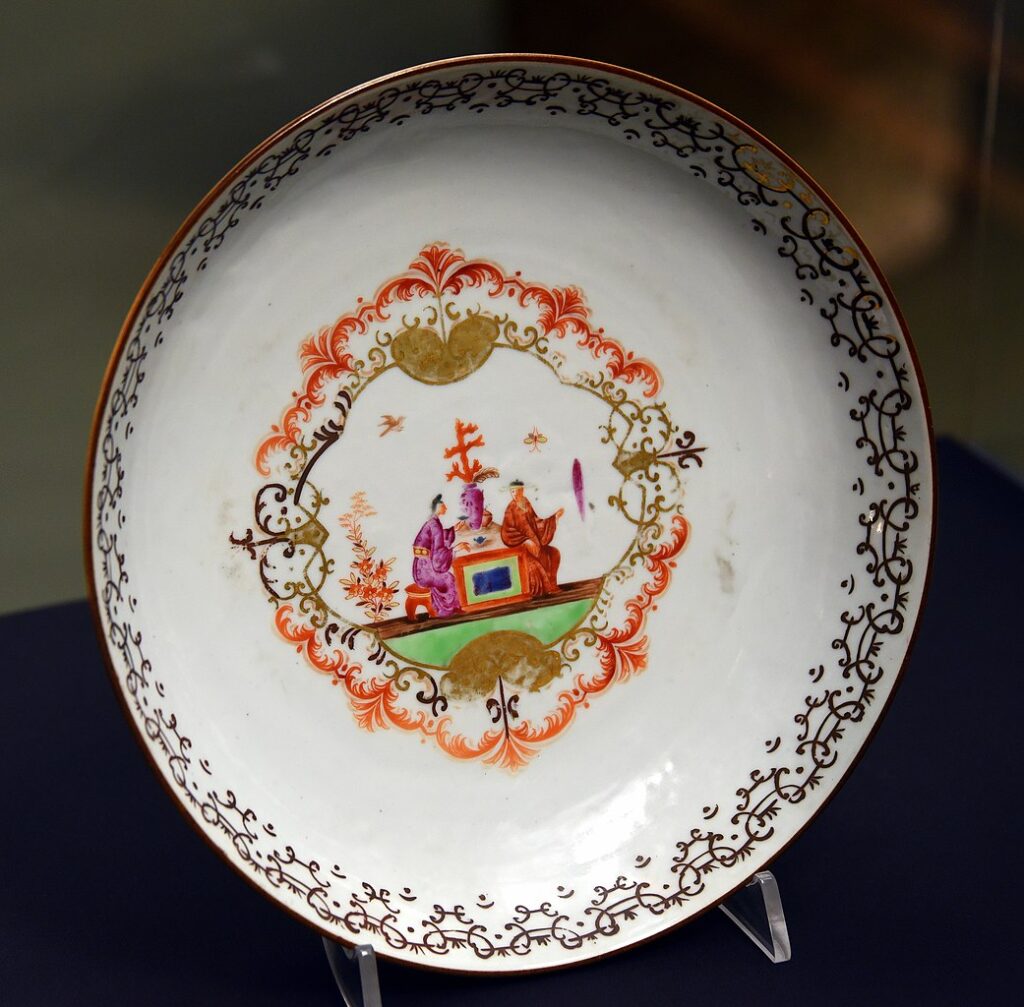
Chinoiserie porcelain refers to a design style that originated in China but became popular in Europe, especially in the 17th and 18th centuries. The term Chinoiserie” refers to the European interpretation of Chinese art, which was used extensively in porcelain dishware. The designs typically feature scenes of oriental landscapes, pagodas, and exotic flora and fauna. Today, vintage Chinoiserie porcelain can range from $200 to $5,000, depending on the maker and age.
Chinoiserie porcelain became a fashionable trend among European aristocrats in the 1700s, who sought to emulate Chinese art and culture. This style was influenced by the West’s fascination with Chinese aesthetics, which were seen as both exotic and luxurious. Although originally made in China, many European porcelain manufacturers, such as Meissen and Sèvres, adopted and adapted the style. Today, Chinoiserie pieces remain highly collectible for their artistic value and historical importance.
Meissen Porcelain

Meissen porcelain, produced in Meissen, Germany, since 1710, is considered some of the finest porcelain in the world. It was the first European manufacturer to successfully produce porcelain, which was previously a secret held by the Chinese. Meissen is known for its delicate craftsmanship, intricate designs, and beautiful, hand-painted decorations. Depending on the piece, Meissen porcelain can be worth anywhere from $200 to over $10,000, with some rare pieces reaching even higher values.
The most iconic Meissen pieces feature blue and white patterns, often depicting flowers, animals, and mythological scenes. The company became renowned for its figurines, which were some of the first porcelain sculptures to be produced in Europe. Today, Meissen porcelain is still produced but vintage pieces remain highly prized by collectors for their exceptional quality and historical significance. The company’s long legacy continues to influence porcelain production worldwide.
Delftware
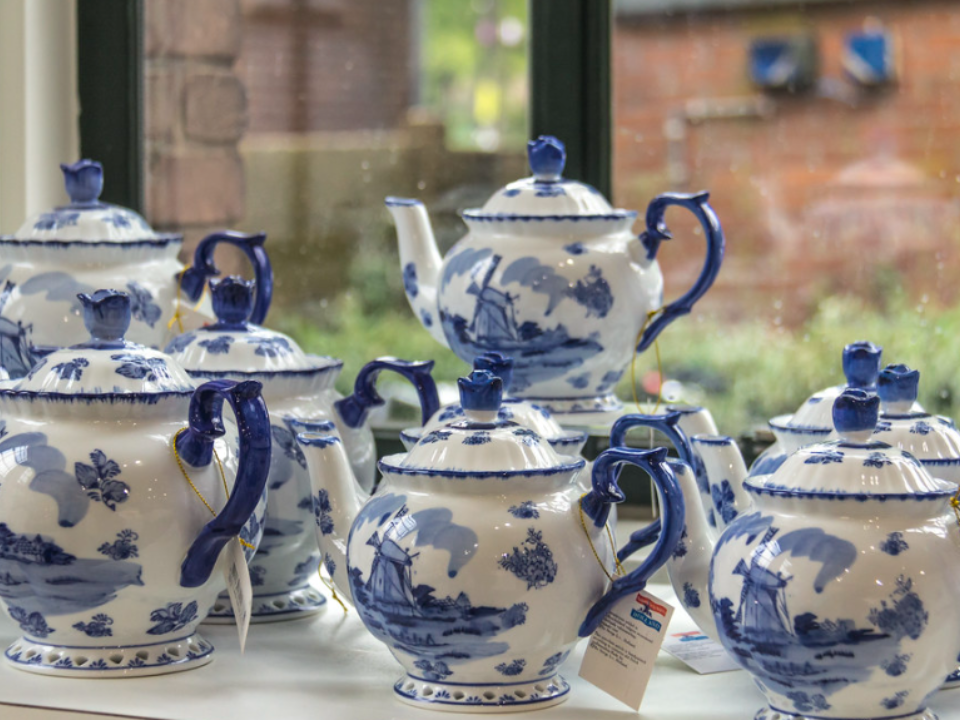
Delftware, produced in Delft, Netherlands, became widely popular in the 17th century and is known for its blue-and-white pottery. Originally inspired by Chinese porcelain, the Dutch began producing their own version in the 1600s, which was both durable and beautifully decorative. Delftware is most famous for its hand-painted patterns, often depicting scenes of daily life, animals, and nature. Vintage Delftware pieces can be found for anywhere between $100 and $5,000, depending on rarity and condition.
Delftware was produced in large quantities in the 17th and 18th centuries, and it was widely exported to European markets, especially during the Dutch Golden Age. The blue-and-white color scheme remains iconic, and Delftware has influenced pottery production around the world. Today, original Delftware remains highly collectible and is often seen as a symbol of Dutch craftsmanship. Its historical and artistic value continues to make it a highly sought-after item among collectors.
Paragon China
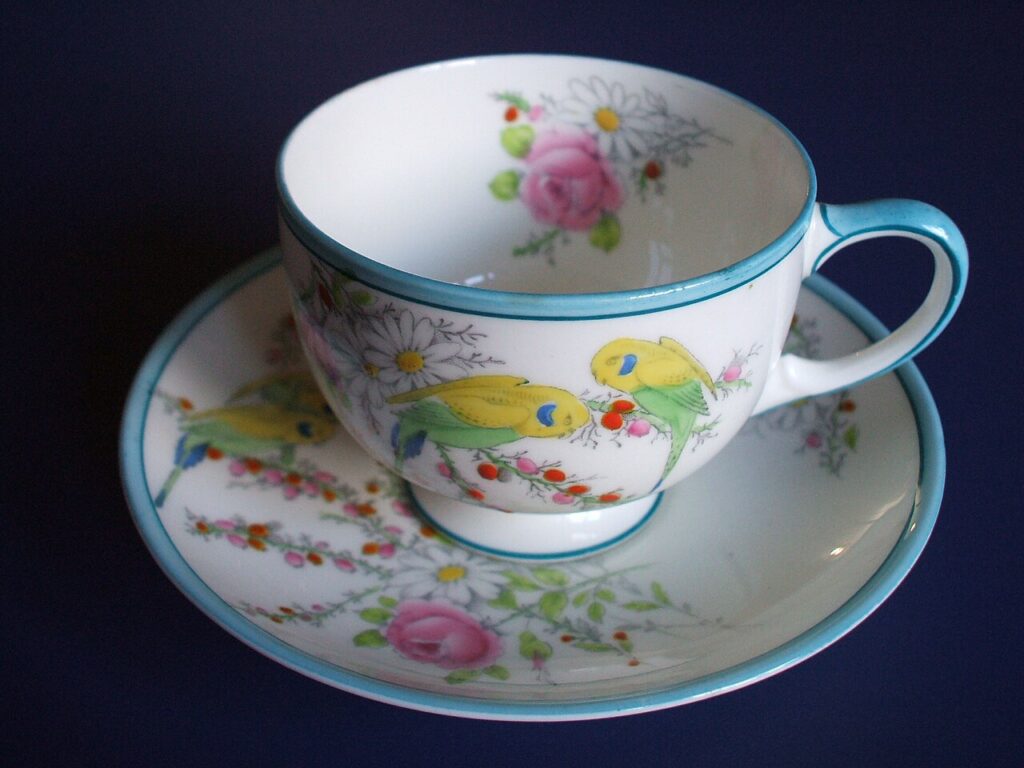
Paragon China was founded in 1897 in England and is known for producing fine porcelain with hand-painted floral designs. Paragon became especially popular in the early 20th century for its delicate tea sets and dinnerware, which were often gilded and decorated with intricate patterns. Depending on the rarity and condition of the pieces, Paragon China can range in value from $50 to $1,500.
Paragon’s designs were often inspired by the Art Deco and Art Nouveau movements, which influenced many of the decorative arts during the early 20th century. The company’s fine china became synonymous with luxury and elegance, especially in the upper echelons of British society. Today, Paragon China is still regarded as one of the finest porcelain manufacturers, with collectors valuing both its beauty and history. Its legacy continues as an important brand in vintage dishware collections.
Wedgwood Black Basalt
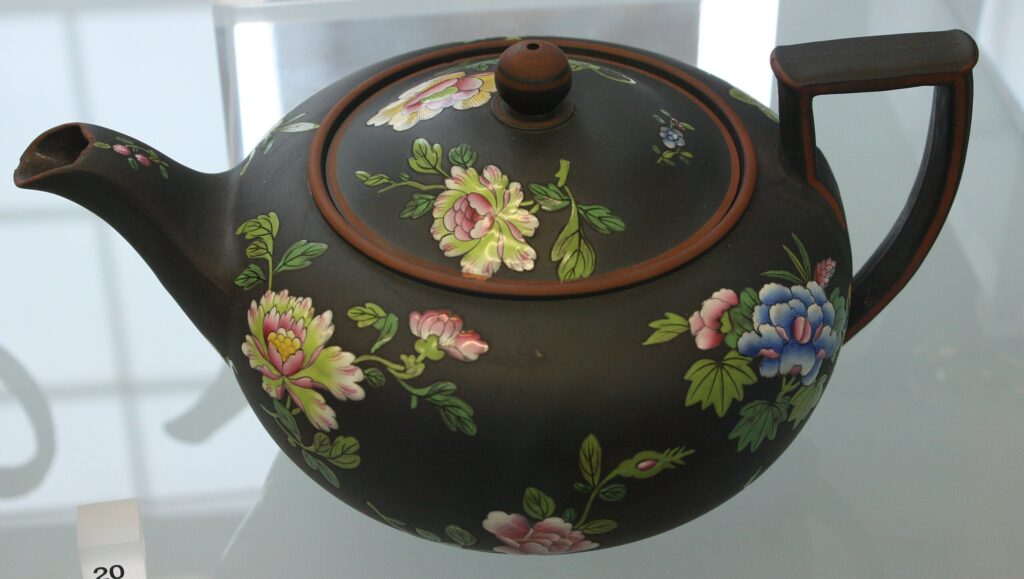
Wedgwood Black Basalt is a type of unglazed stoneware that was introduced in the late 18th century by Josiah Wedgwood. Known for its matte black finish, this style became popular in both Europe and America, often featuring neoclassical designs. It was initially created to imitate ancient Greek and Roman pottery, and Wedgwood’s designs were influenced by classical antiquity. Today, Wedgwood Black Basalt pieces can range from $100 to $5,000, depending on age and rarity.
The design of Black Basalt Wedgwood was intended to mimic the look of ancient sculptures and pottery. Its deep, rich black color and smooth surface make it a highly unique piece of dishware. Over time, Wedgwood Black Basalt became a favorite among collectors of antique pottery, known for both its beauty and its connection to classical art. With its elegant design and historical significance, Black Basalt remains a treasured style in vintage dishware collections.
Vintage dishware provides a fascinating glimpse into the past, where every pattern and design holds a rich history. These pieces have stood the test of time, remaining relevant in both functionality and beauty. Embracing the legacy of these dishware styles will undoubtedly enhance your collection and bring timeless charm to your home.
This article originally appeared on Avocadu.
